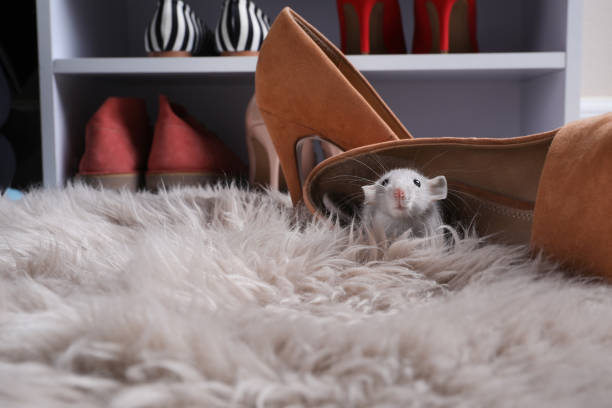Mice are cute but you definitely don’t want them scurrying in your home. The same can be said of rats. Two rat species that are very common in the US are the roof rat and Norway rat, which are believed to have been brought to the country during the 17th and 18th centuries aboard ships of Hessian troops bound for the New World.
Rodents like rats and mice bring a host of problems for homeowners. They not only contaminate your food, drinks, utensils and cookware with their droppings and urine, but they also carry many diseases, some of which are deadly.
How to Tell If You Have a Rodent Problem
Roof rats and Norway rats look very similar and it can be hard to tell them apart. Here are their traits and characteristics:
Roof rats (Rattus Rattus)
Roof rats are slimmer than a Norway rat and the color of their fur ranges from dark gray to black. The color of their belly is off-white, sometimes gray. They are usually 13 – 18 inches long, with a long hairless tail, big eyes and big ears.
Norway rats (Rattus Norvegicus)
Norway rats are bulky and large creatures, with brown fur and gray belly. They can grow to 16 inches long. They have short tails (compared to their head and body length) and their eyes and ears are smaller than that of roof rats.
You’ll know if your house has rodents when you notice the following signs:
- Scratching sounds in floors or ceilings.
- Droppings around pet or human food.
- Droppings near trash.
- Evidence of gnawing on wood or wires.
- Piled nesting materials.
- Burrows under the home or in the yard.
- Rodent hairs.
Why Are Rodents a Problem?
Norway rats can cause stability issues to the building because they dig burrows. They also destroy landscaping and block sewer lines. Roof rats on the other hand, also cause structural damage, when they chew on wires and wood.
But perhaps more importantly, rats and mice carry with them deadly diseases. The Hantavirus was first discovered in 1993 in Arizona, Utah, Colorado and New Mexico is carried by the deer and white-footed mouse, the rice rat and the cotton rat. This virus can cause kidney failure and respiratory problems.
Lymphocytic choriomeningitis (LCM) is a viral disease carried primarily by a house mouse. It is believed that 5% of house mice in the US have this virus. LCM causes meningitis, encephalitis and meningoencephalitis. Plague is another disease carried by rodents. It killed millions of people in Europe during the Middle Ages.
How to Get Rid of Rodents
Naturally, the best way to deal with rats and mice is to prevent them from getting inside your home. But if you suspect they are already inside, then here are some steps to help you solve your pest problem:
1. Set Traps
Traditional spring-loaded snap traps are cheapest option you can get and they also kill mice instantly. Keep trapping them and move the traps around your home until you no longer see any signs of rodents.
We would advise against the use of poison especially if you have young kids or pets in the house as these things are very dangerous. Moreover, using rat poison means you have to look for the dead rodents in your home and there’s a good chance they will decompose and emit an awful smell before you do.
2. Seal Off Entrances and Openings
Rodent-proof your house so that you won’t see any more of them in the foreseeable future. Keep in mind that mice have tiny heads so they can fit through small gaps.
3. Store Food Properly
Don’t leave last night’s dinner leftovers in the kitchen and make sure dirty dishes aren’t simply piled up in the sink. Rodents are always foraging so make sure all your food items and liquids are in sealable or airtight containers.
If these tips do not solve your pest problem, the next best thing to do is to call the pros. A professional pest control service like Alterra may have all the knowledge, products and equipment needed to catch and remove rodents from your house, as well as inspect your home for possible entryways.
